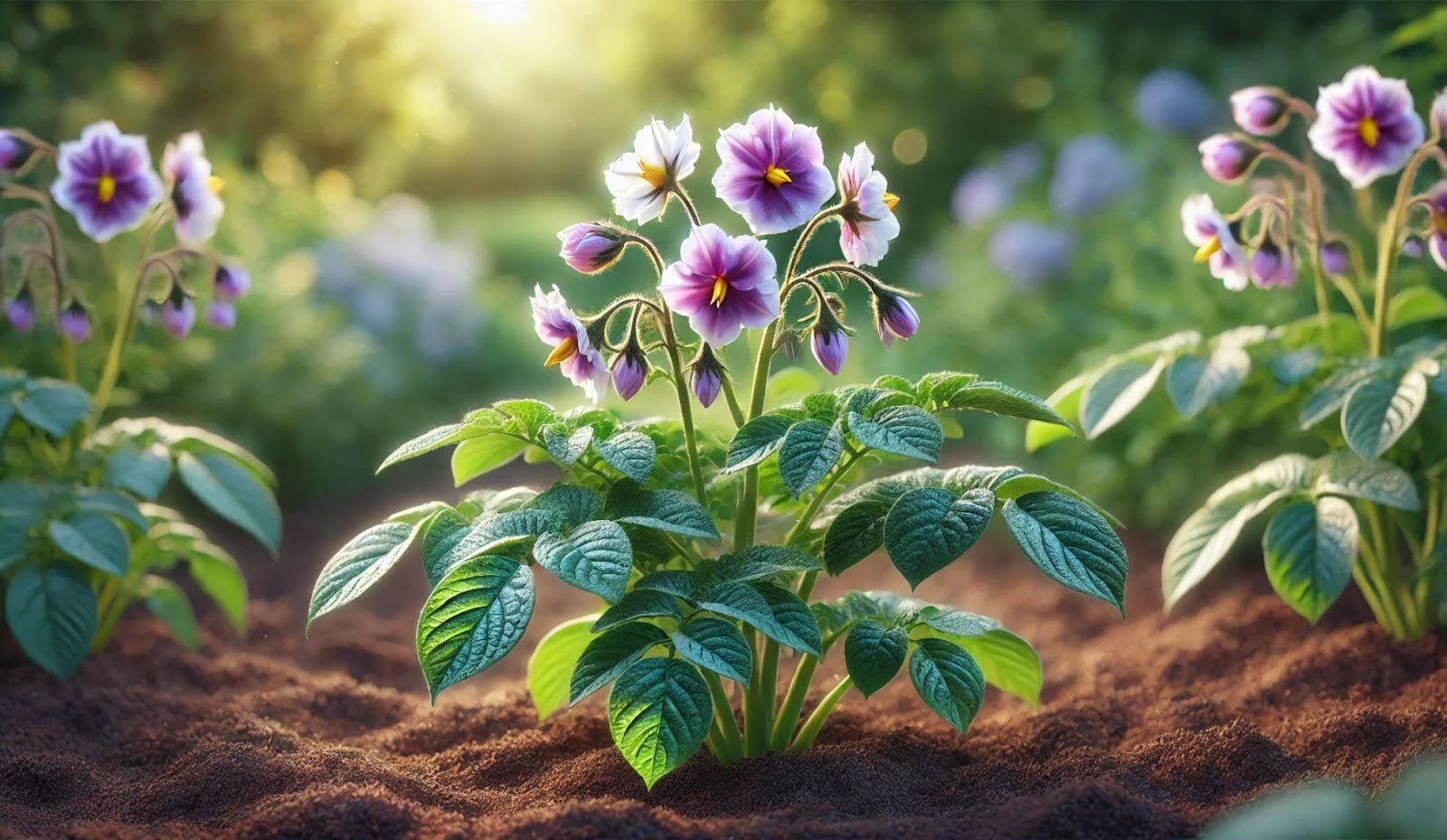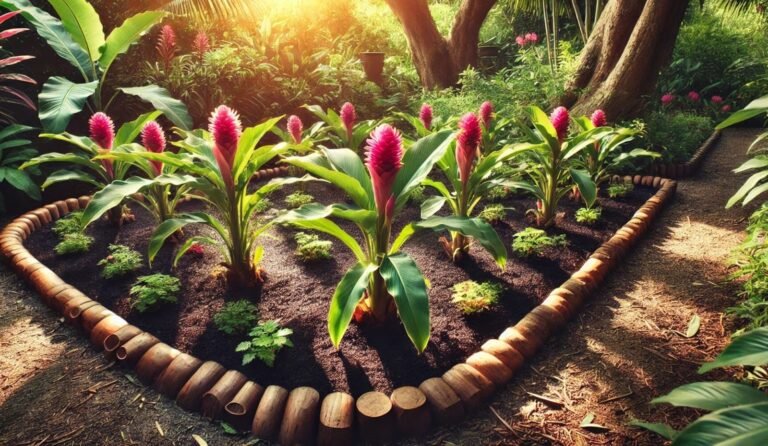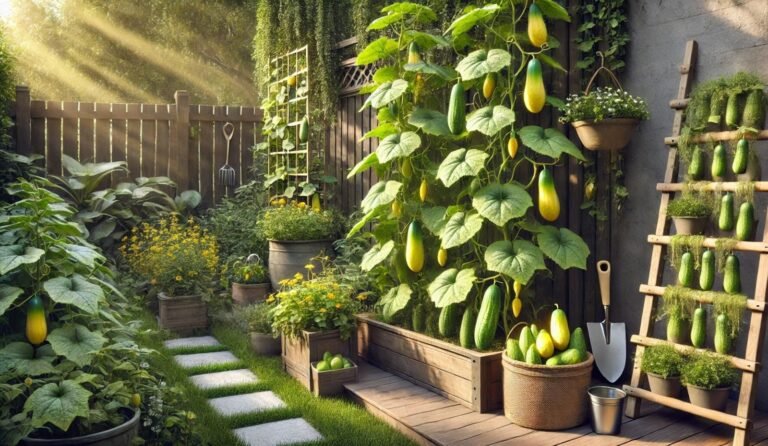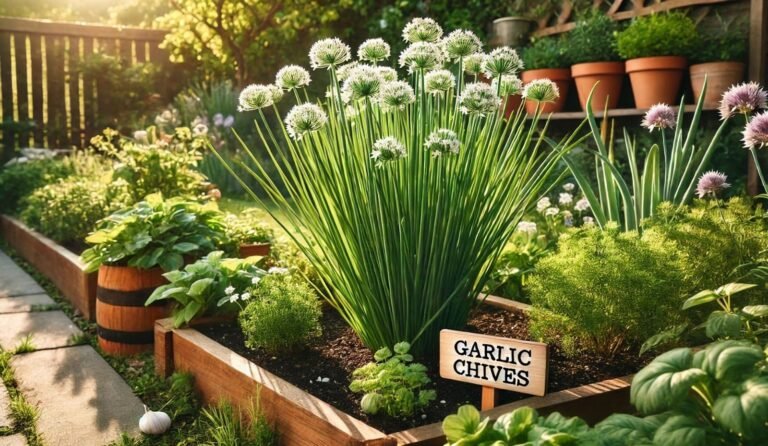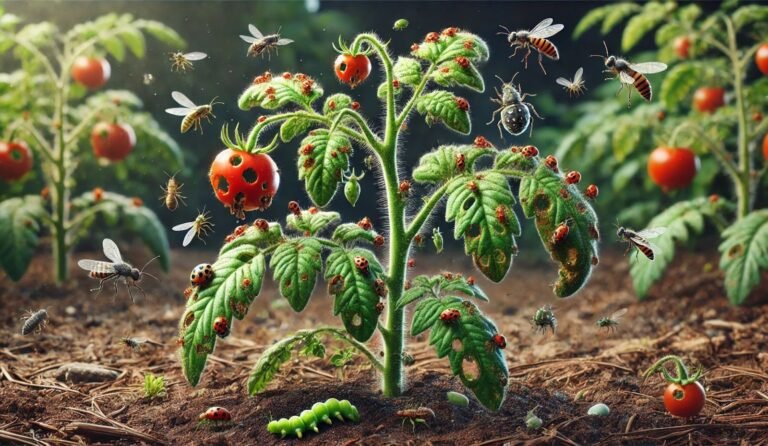Potato Plant Flowering – Everything You Need to Know
Potato plant flowering might surprise you, but it’s a totally normal part of growing potatoes. Those little blooms don’t just look pretty—they signal big things happening underground! But do flowers mean your potatoes are ready? Not exactly. Some plants flower like crazy, while others don’t bloom at all, yet both can produce a great harvest. So, should you worry if your potato plant isn’t flowering? Let’s break it all down and get to the root of the mystery!
What Does It Mean When a Potato Plant Flowers?
Potato plants (Solanum tuberosum) typically go through several stages of growth, and flowering is one of them. When a potato plant begins to bloom, it’s a sign that the plant is transitioning from its vegetative phase to tuber development.
These small, delicate flowers resemble those of tomato and eggplant plants because they all belong to the same family, Solanaceae (nightshade family). The flowers can be white, pink, purple, or even blue, depending on the potato variety you’re growing. Many gardeners assume that the appearance of flowers means potatoes are ready for harvest, but that’s not entirely true.
While flowers do indicate that tubers are forming underground, they don’t necessarily mean that your potatoes are mature yet. Some potato varieties flower heavily, while others may not bloom at all, yet both can still produce a good harvest.
Understanding the Growth Stages of a Potato Plant
Before diving deeper into the flowering stage, it’s important to understand the full life cycle of a potato plant. This knowledge helps you identify when and how flowering fits into the overall growth process.
1. Sprouting & Early Growth
Potato plants begin their journey when seed potatoes (tubers with “eyes”) are planted in the soil. After a few weeks, sprouts emerge from the ground, forming the first green shoots.
2. Vegetative Growth
Once the plant establishes itself, it focuses on producing stems, leaves, and roots. During this period, the plant absorbs nutrients from the soil and sunlight to fuel its development.
3. Flowering Stage
This is the stage where the plant starts producing small blooms, usually 6-8 weeks after planting. While flowering is a natural process, not all potato plants will bloom, and that’s completely normal.
4. Tuber Formation & Maturation
As flowers appear, potatoes begin developing underground. The plant directs energy into tuber formation, which continues even after the flowers fade or drop off.
5. Foliage Dieback & Harvest Time
When the plant reaches the end of its life cycle, the leaves and stems turn yellow and die back. This signals that the potatoes are ready to be harvested.
What Do Potato Flowers Look Like?
Potato flowers are small, star-shaped, and typically appear in clusters at the top of the plant. Their colors vary depending on the variety, ranging from white to pink, purple, or blue, often with a yellow center. Because potato plants belong to the same family as tomatoes, eggplants, and peppers, their flowers look similar. However, unlike tomato flowers, which lead to fruit production, potato flowers don’t produce edible fruit.
Some potato plants may even develop small, green, tomato-like fruits after flowering. While these fruits contain seeds, they are toxic and not meant for consumption due to high levels of solanine—a natural defense chemical found in nightshade plants.
The Role of Pollination

Potato plants produce beautiful, delicate flowers that come in various colors, including white, pink, lavender, or purple. These flowers serve an essential purpose: facilitating pollination. While potatoes are primarily propagated through tubers, the process of pollination can still occur.
In some cases, pollinated flowers may produce small green berries, each containing seeds that can be used for breeding new potato varieties. However, it’s important to note that most commercial potato varieties are not grown from seed but rather from certified seed potatoes.
Is Flowering Necessary for Potato Production?
A common misconception among new gardeners is that potato plants must flower to produce tubers. In reality, flowering isn’t required for a successful potato harvest. Some varieties, especially modern hybrids, don’t flower at all or flower very lightly but still develop plenty of potatoes underground. Flowering is simply a sign that the plant is entering its reproductive stage.
However, the actual potato tubers grow underground from stolons, not from the flowers themselves. This means that even if your potato plant doesn’t flower, it can still produce a full yield.
How long after the potato plant flowers are the potatoes ready?
The flowering stage also provides a clue about when you can expect to harvest your potatoes. Generally, potato plants will start flowering a few weeks before the tubers are ready to be harvested. The duration between flowering and harvest can vary depending on the potato variety and growing conditions. However, it’s recommended to wait until the foliage has started to die back and turn yellow before digging up the potatoes. This ensures that the tubers have reached their full size and maturity, resulting in a more satisfying harvest.
Why Some Potato Plant Flowering While Others Don’t
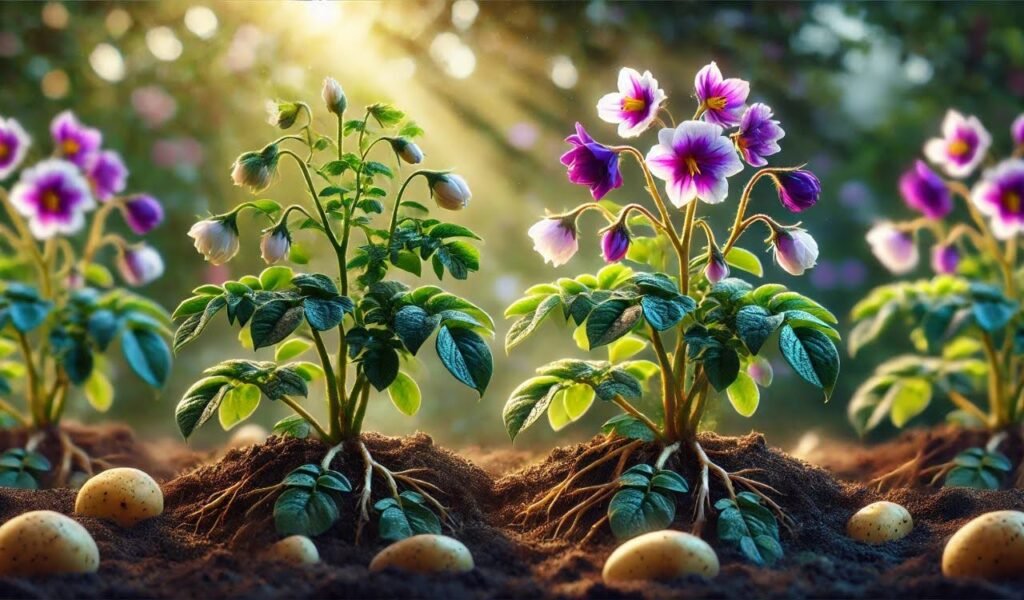
Not all potato plants will flower, and that’s perfectly normal. Several factors influence whether or not your potato plants bloom.
1. Potato Variety
Some potato varieties, such as Russet and Yukon Gold, produce a lot of flowers, while others, like Kennebec potatoes, may not flower much or at all. The absence of flowers doesn’t mean your potatoes aren’t growing underground—it’s just a difference in genetics.
2. Growing Conditions
Potato plants need the right environment to flower. The following factors play a big role in whether or not they bloom:
Temperature – Ideal temperatures for flowering range between 60-70°F (15-21°C). If the weather is too hot or too cold, flowering may be affected.
Sunlight – Potatoes require at least 6-8 hours of direct sunlight daily to thrive.
Soil Quality – Well-drained, nutrient-rich soil encourages healthy growth and flowering.
3. Watering & Fertilization
Over-fertilizing with nitrogen-rich fertilizers can promote excessive leaf growth at the expense of flowers and tubers. A balanced fertilizer with phosphorus and potassium encourages healthy flowering and tuber development.
Should You Remove Potato Flowers?
Many gardeners debate whether to remove potato flowers or leave them. The answer depends on your goal:
If you want larger tubers, some believe that pinching off flowers may help direct more energy into underground growth rather than seed production.
If you leave the flowers alone, they will naturally fall off, and the plant will continue tuber development without issue.
In general, removing flowers isn’t necessary but can be done if you want to experiment and see if it impacts your yield.
How to Care for Blooming Potato Plants
When your potato plants start flowering, it’s important to continue proper care to ensure a healthy harvest. Here’s what you should do:
1. Maintain Consistent Watering
Flowering potatoes need about 1-2 inches of water per week. Deep watering ensures moisture reaches the developing tubers. Avoid overwatering, as it can lead to rot.
2. Apply Proper Fertilization
Use a low-nitrogen, high-phosphorus, and potassium fertilizer to support tuber growth. Too much nitrogen will result in lush green leaves but fewer potatoes underground.
3. Hill the Soil Around the Plants
Hilling—piling soil around the base of the plant—prevents tubers from being exposed to sunlight, which can turn them green and toxic. This also provides additional support for the plant.
4. Protect Against Pests and Diseases
Flowering potato plants can attract pests like Colorado potato beetles, aphids, and flea beetles. Regularly inspect plants and use organic or chemical solutions if needed.
FAQ
Why is my potato plant flowering?
Potato plants flower as part of their natural growth cycle. The flowers indicate that the plant is shifting from its vegetative stage to tuber development. However, flowering does not necessarily mean that the potatoes are ready for harvest yet.
Do potato flowers mean the potatoes are ready to harvest?
No, flowering is an early sign that tubers are forming underground, but the potatoes are not mature yet. Potatoes are typically ready for harvest 2-4 weeks after the foliage starts to yellow and die back.
What should I do when my potato plant starts flowering?
When your potato plant flowers, continue regular watering, fertilization, and pest control. Avoid disturbing the soil too much, as the developing tubers need stability to grow properly.
Can I still get potatoes if my plant doesn’t flower?
Yes! Some potato varieties do not flower, or they flower very lightly. This does not affect tuber formation. As long as the plant has healthy foliage and is well cared for, it will produce potatoes underground.
Should I remove the flowers from my potato plant?
It’s optional. Some gardeners remove flowers to encourage more energy to be directed toward tuber growth, but this is not necessary. Leaving the flowers on won’t harm your plant or your yield.
Do potato plants produce seeds from their flowers?
Yes, but they are not commonly used for growing potatoes. Some potato plants produce small, green, tomato-like fruits after flowering. These contain seeds, but they are toxic and not used for propagation. Potatoes are typically grown from seed potatoes (tubers) rather than seeds.
Conclusion
Potato plant flowering is a fascinating part of the growing process, but it isn’t necessarily required for tuber production. Some varieties bloom heavily, while others may not flower at all—and that’s completely fine! Whether or not your potato plants flower, the key to a successful harvest is proper care, the right growing conditions, and patience. By providing the right water, soil, and nutrients, you can ensure healthy tuber development and enjoy a rewarding harvest of homegrown potatoes. So, the next time you see your potato plants blooming, appreciate the beauty of the flowers, but remember—the real treasure is growing underground! Happy gardening! 🌱🥔

